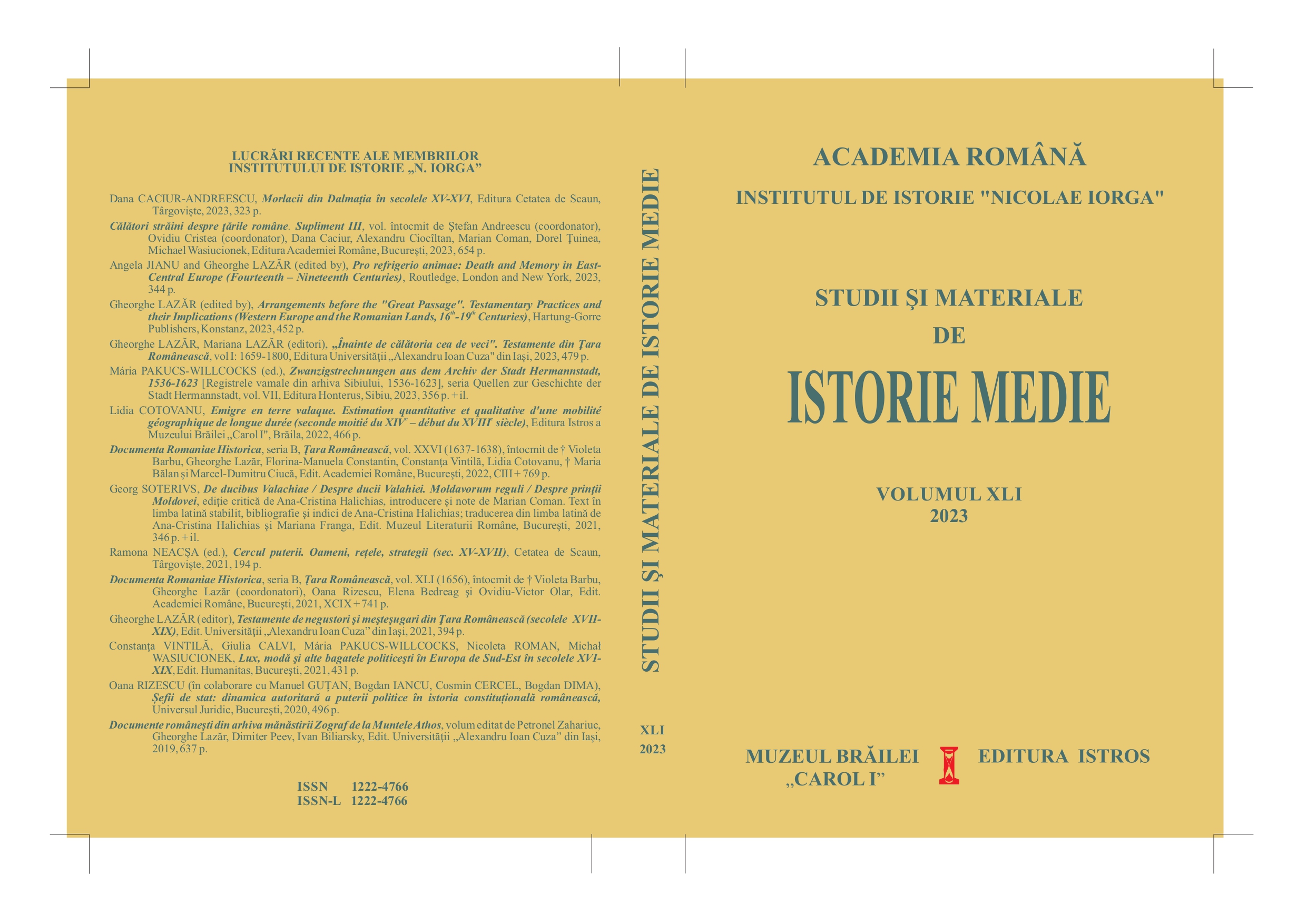Contribuții la istoria cazacliilor din Moldova
Contributions to the History of the Cossack Merchants in Moldavia
Author(s): Laurențiu RădvanSubject(s): Economic history, Ethnohistory, Local History / Microhistory, 18th Century, The Ottoman Empire
Published by: Institutul de Istorie Nicolae Iorga
Keywords: Moldavia; Cossacks; cazaclii; wine trade; furs; Odobești
Summary/Abstract: Although they were a very economically active group in the 18th century and the first part of the following century, the cazaclii are still relatively unknown. With a Turkish-sounding name, these people formed a real bridge between the two Romanian principalities and the Eastern space, at a time of great political, social and economic change. In economic terms, the cazaclii can be seen as the last stage in the relations between the Cossack and Russian areas and the Romanian territories, which had their basis in the Middle Ages and which gradually took a different course after 1812 and after the reorientation of the principalities towards the Western political, cultural and economic area. The first wine merchants recorded in the sources as “cazaclii” appeared in Moldavia after 1700. One explanation for the intensification of trade relations between the principalities and the area controlled by the Cossacks can be found in Russia's efforts to expand its influence in this part of the continent. After Bogdan Khmelnitsky's Cossack uprising, Poland lost in stages the territories east of the Dnieper, which was the context in which the Cossacks sought to retain as much autonomy as possible for their hinterland. In 1764, the office of hetman was abolished, the following year the privileges of the Sloboda Ukraine Cossacks were also abolished, and in 1775 the military and administrative centre (sich) on the Dnieper of the Zaporizhian Cossacks was destroyed by order of Tsarina Catherine II. However, between the late 17th century and the 1760s and 1770s, the hetmans favoured trade and urban centres as part of a policy of openness in line with Russia's new political and economic directions, as envisaged by Peter I. The Cossacks came from towns both near and far from Moldavia: Nejin (Nizhyn), Kiev, Poltava, Kremenchuk, Kherson, along with Movilău (Mohyliv-Podilskyi), Dubăsari, Tiraspol, Camenița (Kamianets-Podilskyi) and Ovidiopol. Some brought furs and left with wine, others came especially for wine, the main source being the large Odobești vineyard in southern Moldavia. The peak of this trade was in the second half of the 18th century - first decade of the 19th century. Russia's takeover of the territory between the Prut and the Dniester rivers was followed by protectionist customs measures and the cultivation of its own vineyards, which reduced the presence of merchants in Moldavia. In this study we present the extent to which this trade took hold, the institutions involved, individual cases of cazaclii, and the challenges that faced their business.
Journal: Studii şi Materiale de Istorie Medie (SMIM)
- Issue Year: XLI/2023
- Issue No: XLI
- Page Range: 71-99
- Page Count: 29
- Language: English, Romanian
- Content File-PDF

